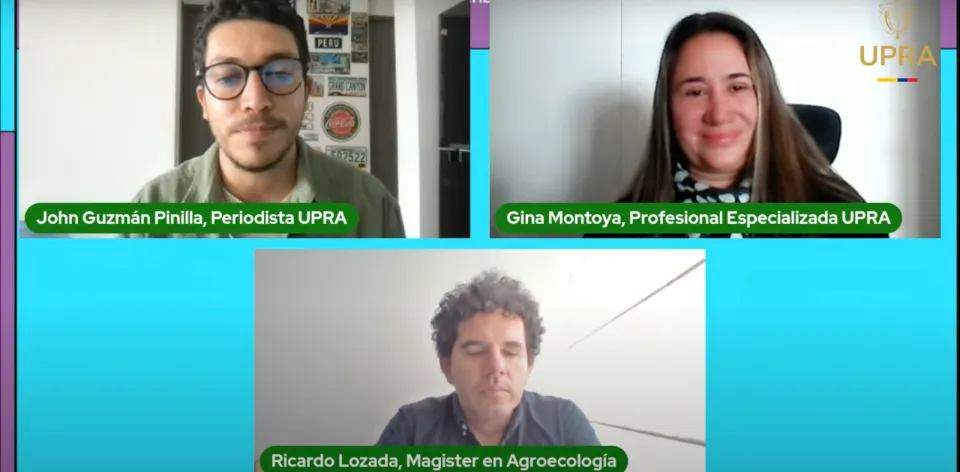PRESS ROOM
 8/8/2024
8/8/2024
Peasant, family, ethnic, and community agriculture directly impacts the human right to food

UPRA published the text "Characterization and Typologies of Peasant, Family, Ethnic, and Community Agriculture with an Agrobiocultural Approach" in 2024.
Bogotá, D. C., (@UPRAColombia, @claudialili76). In Colombia, 70% of the agricultural products produced come from peasant, family, ethnic, and community agriculture, directly impacting the human right to food. This was announced by Gina Montoya, a specialized professional at UPRA, who opened the UPRA Classroom Workshop on the "Characterization and Typologies of Peasant, Family, and Community Agriculture with an Agrobiocultural Approach".
Bogotá, D. C., (@UPRAColombia, @claudialili76). In Colombia, 70% of the agricultural products produced come from peasant, family, ethnic, and community agriculture, directly impacting the human right to food. This was announced by Gina Montoya, a specialized professional at UPRA, who opened the UPRA Classroom Workshop on the "Characterization and Typologies of Peasant, Family, and Community Agriculture with an Agrobiocultural Approach".
This Characterization is part of the publications prepared by UPRA to offer a detailed analysis and tools to understand and reinforce the fundamental role of this agricultural model, which is essential for social cohesion, cultural preservation, and environmental sustainability in rural areas of Colombia.
The novelty of the "Characterization and Typologies of Peasant, Family, Ethnic, and Community Agriculture" is precisely its agrobiocultural approach, as at least 55 agrobiocultural subjects were identified, indicating that public policies must be designed from the territories and with the organizations and communities as key players.
Ricardo Lozada, a master's degree holder in agroecology and UPRA collaborator, explained that one of the conclusions of the publication is that peasant, family, and community agriculture is not a homogeneous group; it comprises multiple cultural, economic, social, and political expressions. "Furthermore, it encompasses a diversity of livelihoods, which are crucial for the protection of biocultural heritage," added Lozada.
Those interested in learning more about this Characterization and Typologies of Peasant, Family, Ethnic, and Community Agriculture with an Agrobiocultural Approach can do so at this link: https://upra.gov.co/es-co/Publicaciones/caracterizacion_agricultura_campesina_familiar.pdf
The novelty of the "Characterization and Typologies of Peasant, Family, Ethnic, and Community Agriculture" is precisely its agrobiocultural approach, as at least 55 agrobiocultural subjects were identified, indicating that public policies must be designed from the territories and with the organizations and communities as key players.
Ricardo Lozada, a master's degree holder in agroecology and UPRA collaborator, explained that one of the conclusions of the publication is that peasant, family, and community agriculture is not a homogeneous group; it comprises multiple cultural, economic, social, and political expressions. "Furthermore, it encompasses a diversity of livelihoods, which are crucial for the protection of biocultural heritage," added Lozada.
Those interested in learning more about this Characterization and Typologies of Peasant, Family, Ethnic, and Community Agriculture with an Agrobiocultural Approach can do so at this link: https://upra.gov.co/es-co/Publicaciones/caracterizacion_agricultura_campesina_familiar.pdf

